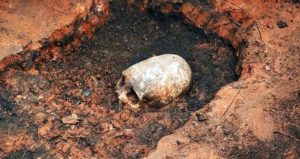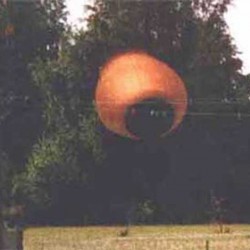
After the skeletal remains of an 18,000-year-old, Hobbit-sized human were discovered on the Indonesian island of Flores in 2003, some scientists thought that the specimen must have been a pygmy or a micro-cephalic – a human with an abnormally small skull.
Not so, said Dean Falk, a world-renowned paleoneurologist and chair of Florida State University’s anthropology department, who along with an international team of experts created detailed maps of imprints left on the ancient hominid’s brain-case and concluded that the so-called Hobbit was actually a new species closely related to Homo sapiens.
Now after further study, Falk is absolutely convinced that her team was right and that the species cataloged as LB1, Homo floresiensis, is definitely not a human born with microcephalia – a somewhat rare pathological condition that still occurs today. Usually the result of a double-recessive gene, the condition is characterised by a small head and accompanied by some mental retardation.
“We have answered the people who contend that the Hobbit is a micro-cephalic,” Falk said of her team’s study of both normal and micro-cephalic human brains published in the Jan. 29 issue of the journal PNAS (Proceedings of the National Academy of Sciences of the United States).
The debate stemmed from the fact that archaeologists had found sophisticated tools and evidence of a fire near the remains of the 3-foot-tall adult female with a brain roughly one-third the size of a contemporary human.
“People refused to believe that someone with that small of a brain could make the tools. How could it be a sophisticated new species?”
But that’s exactly what it is, according to Falk, whose team had previously created a “virtual endocast” from a three-dimensional computer model of the Hobbit’s braincase, which reproduces the surface of the brain including its shape, grooves, vessels and sinuses. The endocasts revealed large parts of the frontal lobe and other anatomical features consistent with higher cognitive processes.

“LB1 has a highly evolved brain,” she said. “It didn’t get bigger, it got rewired and reorganised, and that’s very interesting.”
In this latest study, the researchers compared 3-D, computer-generated reconstructions of nine micro-cephalic modern human brains and 10 normal modern human brains. They found that certain shape features completely separate the two groups and that Hobbit classifies with normal humans rather than micro-cephalic humans in these features. In other ways, however, Hobbit’s brain is unique, which is consistent with its attribution to a new species.
Comparison of two areas in the frontal lobe, the temporal lobe and the back of the brain show the Hobbit brain is nothing like a micro-cephalic’s and is advanced in a way that is different from living humans. In fact, the LB1 brain was the “antithesis” of the micro-cephalic brain, according to Falk, a finding the researchers hope puts this part of the Hobbit controversy to rest.
It’s time to move on to other important questions, Falk said, namely the origin of this species that coexisted at the same time that Homo sapiens was presumed to be the Earth’s sole human inhabitant.
“It’s the $64,000 question: Where did it come from?” she said. “Who did it descend from, who are its relatives, and what does it say about human evolution? That’s the real excitement about this discovery.”
External Links:
Florida State University
Hobbit-Like Human Ancestor Found in Asia
Flores Hobbit-Like Human Picture Gallery
‘Hobbit’ joins human family tree













This is a great story and I think it is premature to dismiss this find based on the analysis of Jacob. We’ll know more once the original research team gets back to the caves in Flores. Hard to believe, but their work was halted by the Indonesian government at one point. Of course, I have a vested interest in hoping this story has some validity to it ,having written a fictional novel on the find. There is more on this ongoing controversy about Homo floresiensis at http://www.floresgirl.com.
Erik John Bertel